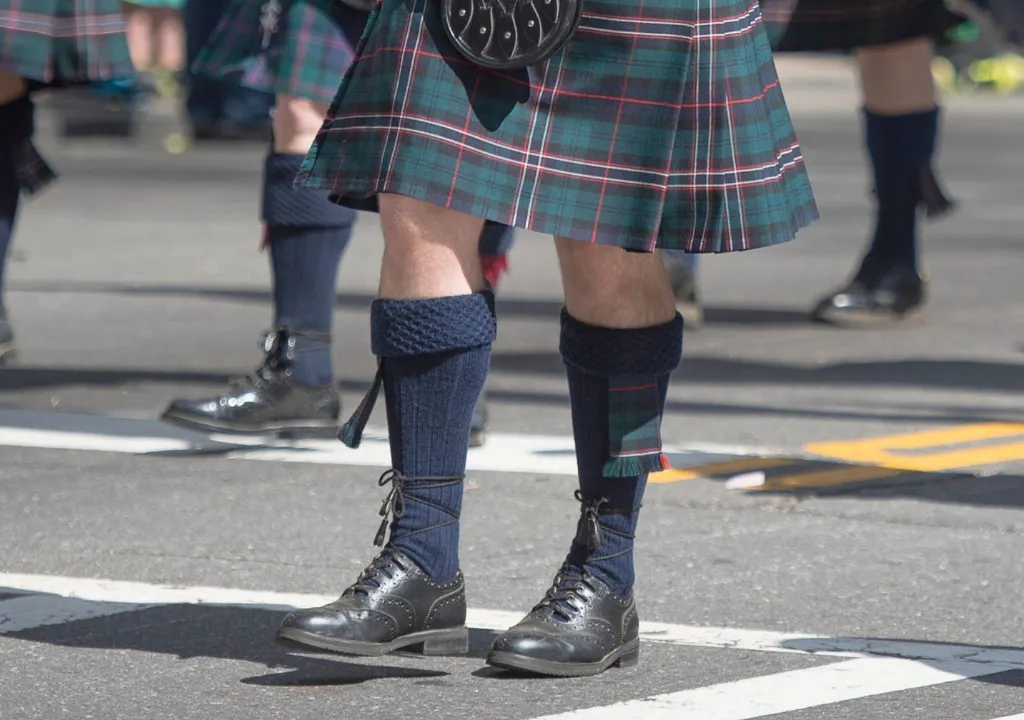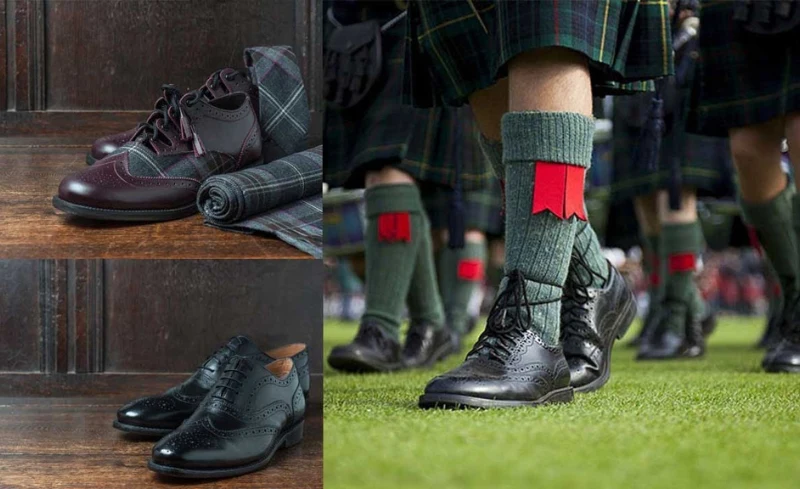What is the Heritage of Scotland Tartan

Tartans are an essential aspect of Scottish culture, with each design telling a unique story that binds people to their ancestry. For generations, these different patterns, which are frequently identified with specific clans, areas, or families, have symbolized Scottish national identity. Tartans are woven into the fabric of Scottish history, expressing the country's pride, traditions, and perseverance.
Among the many tartans, the Heritage of Scotland Tartan is distinguished due to its design and deep symbolism. This Scottish tartan is more than just a cloth; it signifies Scotland's long history and cultural riches. The tradition of Scotland Tartan is a remarkable combination of colors and patterns, with each element carefully picked to represent aspects of Scottish tradition. From its historical beginnings to its modern applications, the Heritage of Scotland Tartan is a beloved symbol of Scottish pride and identity.
The Unique Heritage of Scotland Tartan
The Heritage of Scotland Tartan distinguishes out due to its unique design. Its deep purple background is intertwined with green and white lines, resulting in a vivid and elegant design. Each hue in the tartan has a symbolic meaning: purple denotes monarchy and nobility, green represents the lush Scottish countryside, and white represents peace and harmony.
This creative color combination provides an eye-catching design. It captures the essence of Scottish heritage and ideals, transforming the Heritage of Scotland Tartan into a meaningful and visually appealing symbol of national identity.
Is the Heritage of Scotland Tartan linked to a specific clan or family?
The Heritage of Scotland Tartan is distinctive in that it is not directly related to any clan or family, distinguishing it from many other tartans usually associated with certain lineages. Unlike clan tartans, which have historical and family importance for certain Scottish families, the Heritage of Scotland Tartan is a universal representation of Scotland's rich and diverse heritage. This tartan represents community pride and heritage that transcends specific clans.
It is an excellent choice for anyone wishing to celebrate and commemorate Scottish culture without needing direct clan allegiance.The tradition of Scotland Tartan's unique pattern and colors express the spirit of Scottish identity and tradition. It commemorates Scotland's vibrant history, cultural achievements, and the continuing spirit of its people. This tartan's broad appeal stems from its inclusivity. It provides a means for everyone who values Scotland, whether by heritage, adoration, or association, to demonstrate their attachment to the country.
Its enormous appeal demonstrates its value as a symbol of togetherness and common heritage. The Heritage of Scotland Tartan program allows people to engage in the tradition of wearing tartan, which is steeped in history and ceremony, without being limited to a certain clan. This makes it an adaptable and meaningful choice for various occasions, from personal celebrations to official events, when one desires to express Scottish patriotism.
Celebrations and Displays
The Heritage of Scotland Tartan is prominently featured in various celebrations and events. It is popular for weddings, Highland games, and national holidays. Historically, individuals have worn it to express their Scottish identity formally and casually. Notable appearances include parades, official ceremonies, and cultural festivals, where it is worn with pride.
Decoding the Purple Background of the Heritage of Scotland Tartan
The Heritage of Scotland Tartan's primary purple hue has deep historical and cultural significance. Purple has traditionally represented royalty, power, and luxury. This relationship stretches back to ancient times, when purple dye was scarce and expensive, frequently reserved for the nobility and privileged. By embracing this regal color, the legacy of Scotland Tartan exudes dignity and prominence, reflecting Scotland's rich legacy and illustrious history.

In the context of this tartan, the purple backdrop represents more than monarchy. It also represents the Scottish people's power and tenacity, echoing their long-standing legacy. Purple in the Heritage of Scotland Tartan commemorates Scotland's historical significance and contributions to art, culture, and politics.
The colors of the Heritage of Scotland Tartan are deliberate and intended. Along with the primary purple, the tartan has green and white lines throughout the pattern. Green reflects Scotland's lush and diverse scenery, representing growth, harmony, and nature. It is a tribute to the country's stunning environment, from rolling hills to lush woods and tranquil lochs. Green in the tartan design reflects the Scottish people's strong bond with their land.
White, on the other side, symbolizes peace, unity, and purity. It balances the boldness of purple and green, resulting in a harmonic and visually appealing design. The white lines in the Heritage of Scotland Tartan represent the Scottish people's unity and peaceful cohabitation despite the country's turbulent history. The combination of purple, green, and white creates a beautiful and meaningful design many people wear.
Overall, the purple backdrop of the Heritage of Scotland Tartan is more than just a color choice; it's a symbol with historical and cultural significance. This tartan embodies Scotland's dignity, heritage, and togetherness, making it a potent symbol of Scottish identity.
Who Can Embrace the Heritage of Scotland Tartan?
The Heritage of Scotland Tartan is open to everybody, regardless of clan or family affiliation. This openness transforms it into a strong symbol of togetherness and pride, accepting anybody who chooses to commemorate Scottish heritage. This tartan is highly culturally important, whether worn for personal delight, formal events, or ceremonial purposes. Traditional etiquette advises wearing it with dignity and understanding its rich history.
Tartans' flexibility is seen in modern design, which can be found on kilts, scarves, ties, and even home decor. Its ageless appeal and accessibility enable people of all backgrounds to appreciate and respect Scotland's history and traditions. Wearing the Heritage of Scotland Tartan allows people to commemorate their Scottish heritage while also helping to preserve and appreciate this iconic symbol.
Fashion and Accessories
The versatility of the Heritage of Scotland Tartan extends to various clothing items and accessories. Kilts, skirts, and dresses are popular choices, often complemented by accessories like ties, scarves, and hats. For those looking to incorporate the tartan into their wardrobe, pairing it with solid colors helps highlight its unique pattern. The tartan also appears in home decor, adding a touch of Scottish heritage to any setting.
Conclusion
The Heritage of Scotland Tartan is more than just a pattern; it symbolizes Scottish pride and unity. Its unique design and rich symbolism make it a significant part of Scotland's cultural heritage. Whether worn at celebrations or as a fashion statement, this tartan continues to honor and preserve the legacy of Scotland's history and traditions.
FAQs
Anyone can wear the Heritage of Scotland tartan, regardless of their heritage. It’s a versatile pattern that celebrates Scottish culture and tradition.
Scottish tartans originated in the Highlands of Scotland in the 16th century. They were initially used by clans as a way to identify family groups and territories, with each clan having its unique pattern and colors.
The national tartan of Scotland is the Royal Stewart tartan, which is associated with the royal House of Stewart and is widely recognized as a symbol of Scottish heritage.
The most famous Scottish tartan is the Royal Stewart tartan, known for its distinctive red pattern and association with the royal family.
Tartan symbolizes Scottish heritage, clan identity, and cultural pride. Each pattern represents a specific clan or region, reflecting the history and traditions of Scotland.
Yes, tartan is a significant part of Scottish culture, representing clan heritage, regional identity, and the rich history of Scotland.
Tartan is special because each unique pattern represents a specific Scottish clan, family, or region, embodying a rich history and cultural heritage. Its distinct designs and colors make it a powerful symbol of identity and tradition in Scotland.





